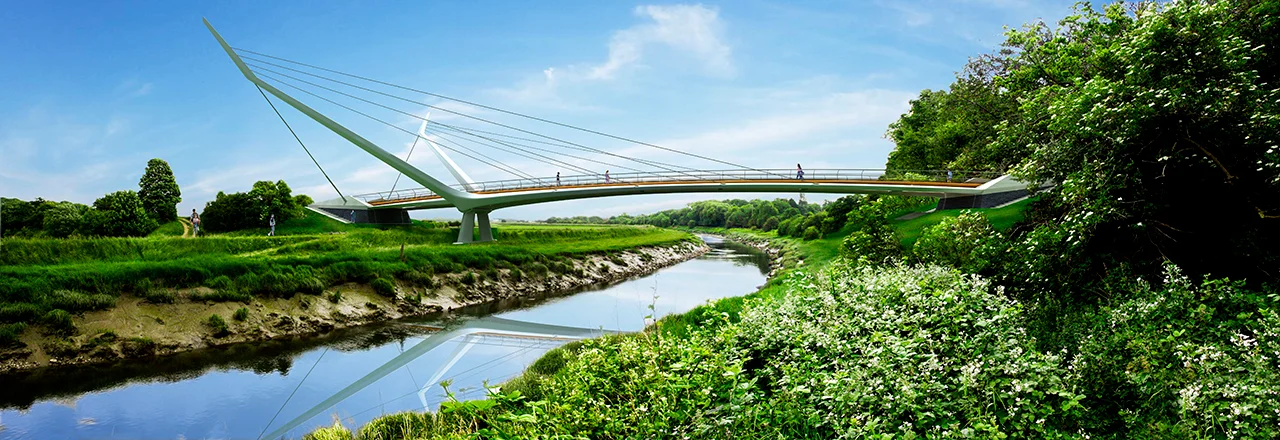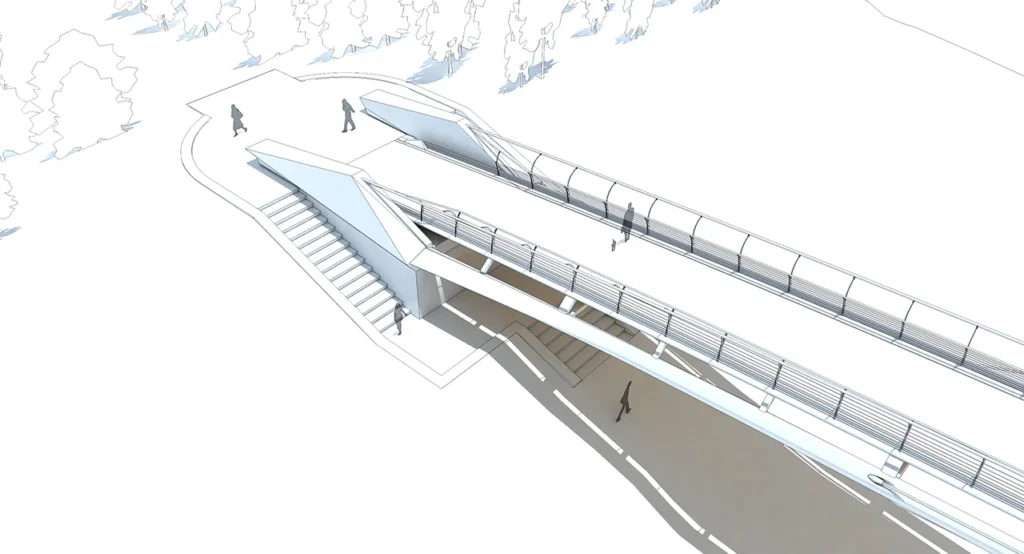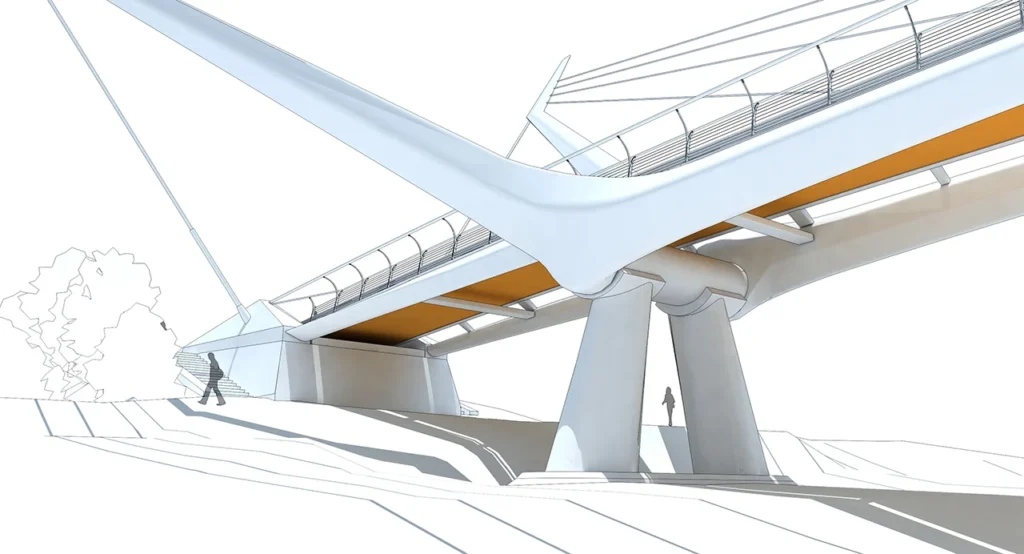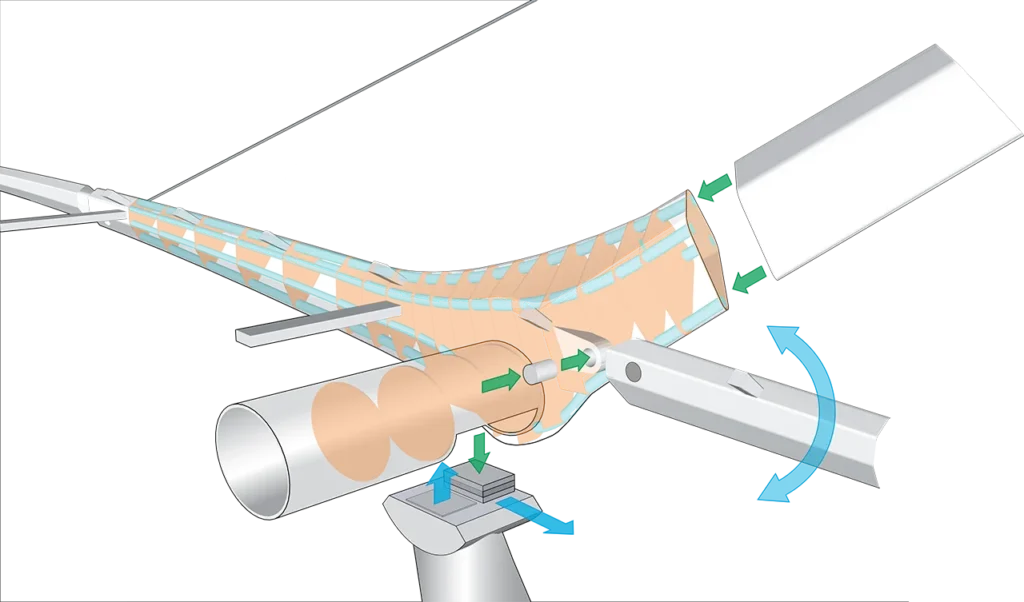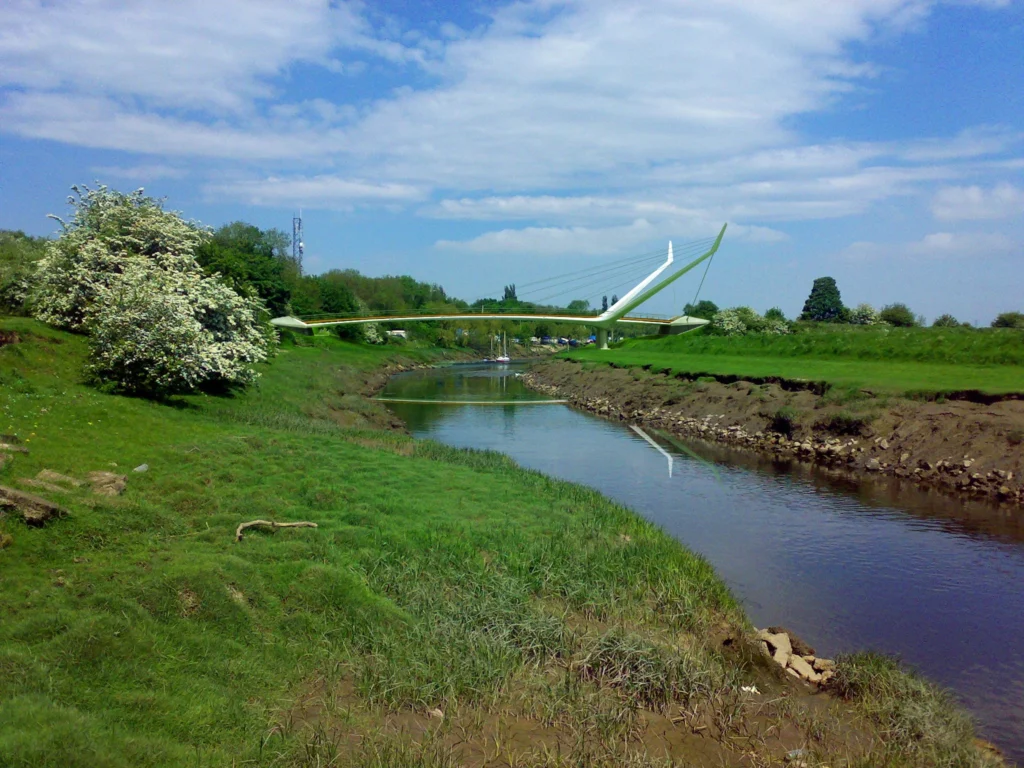A Sustainable Connection
Nestled gracefully across the River Douglas in Lancashire, the Flying Bridge represents a remarkable achievement in sustainable design. This lightweight cable-stayed bridge, inspired by the elegant silhouette of a bird in flight, was conceptualized by Nick Hancock Design Studio. It gained recognition as a finalist in an international design competition organized by RIBA and Lancashire County Council & REMADE, underscoring its innovative approach.
The design of the Flying Bridge prioritizes ecological integrity, as the surrounding wetlands serve as a habitat for several protected species, including great crested newts and bats. To address these environmental considerations, NHDS collaborated with Buro Happold to create a simple yet effective design that minimizes environmental impact.
One of the project’s key features is its construction from prefabricated elements, allowing for assembly primarily from one river bank. This strategic approach significantly reduces disruption to the fragile ecosystem on the opposite bank, demonstrating a commitment to environmentally sensitive construction.
Material selection further enhances the project’s sustainability. The recycled rubber paving provides a durable surface and caters to diverse users, including pedestrians, cyclists, and horses. The low-energy LED lighting also ensures safety while being mindful of the local wildlife, particularly bats. Each choice reflects NHDS’s commitment to employing intelligent, durable materials ideally suited to the bridge’s purpose.
The Flying Bridge is more than just a structure; it symbolizes how thoughtful infrastructure can coexist with nature. By emphasizing sustainable construction methods and selecting materials that respect the environment, NHDS has set a new standard for future developments. This bridge fulfils its functional role and enhances the natural beauty of its surroundings, inviting users to engage with the landscape meaningfully.
As the Flying Bridge stands as a testament to innovative design, it paves the way for future projects prioritising ecological harmony.
